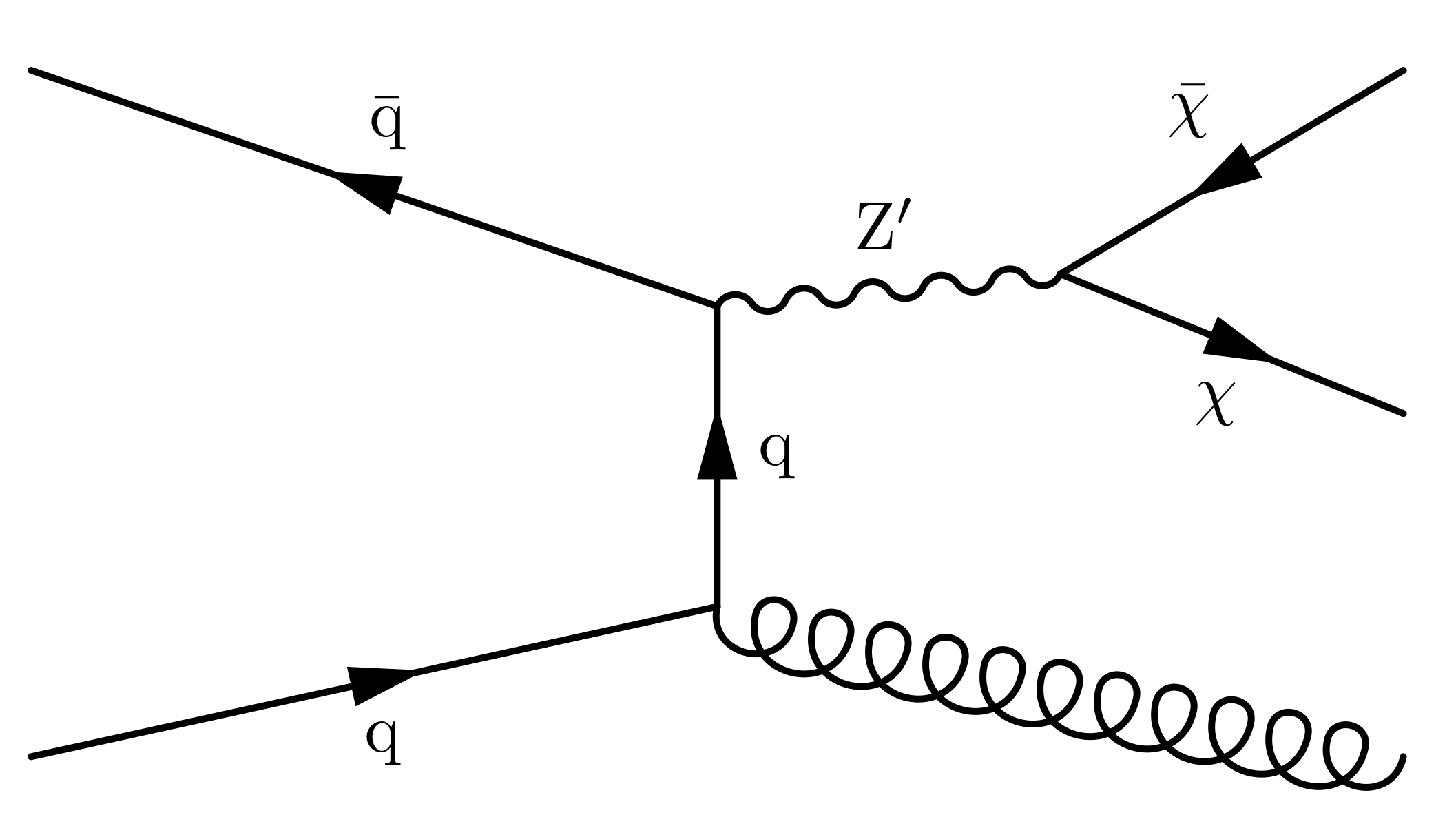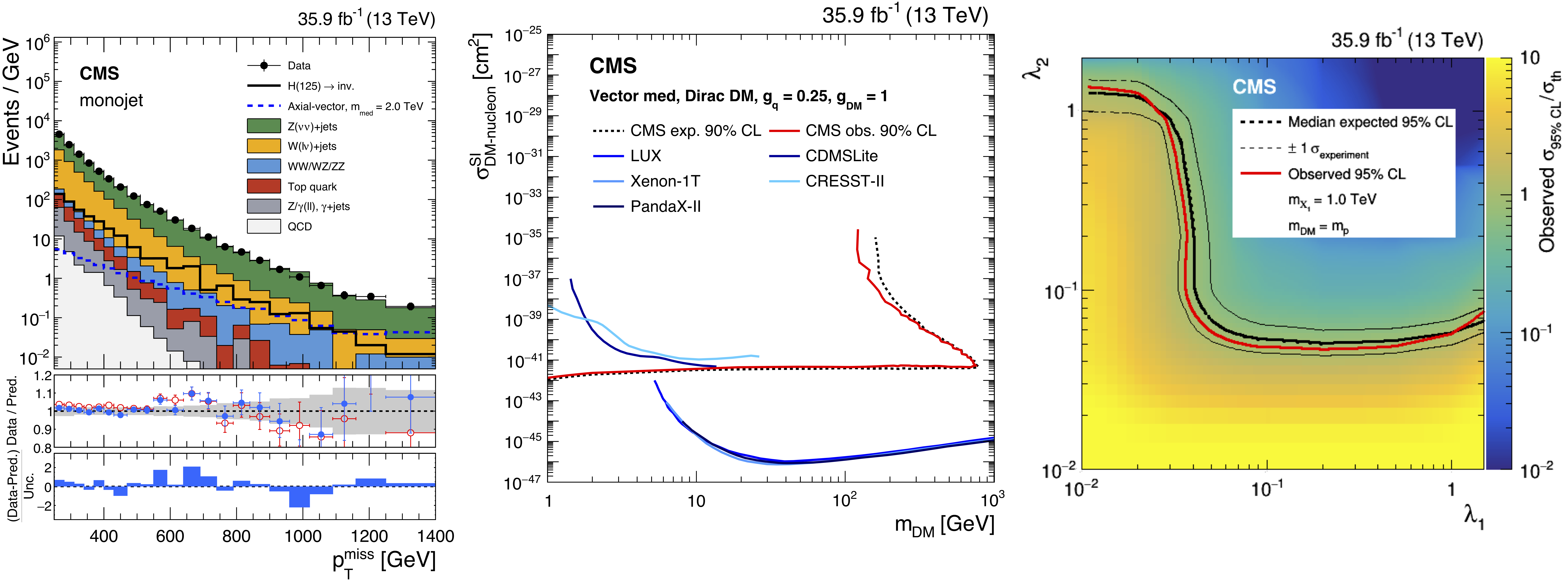Dark Matter at SPRACE
OverviewAstronomical and cosmological observations seem to consistently indicate anomalies related to gravitational phenomena, unaccounted by the matter distribution in systems with scales ranging from single galaxies to galaxy superclusters . A possible explanation for those phenomena would be the existence of a new kind of matter that doesn't interact much with regular particles - dark matter (DM). Under the assumption that dark matter is a particle (𝜒), it stands to reason that it could be produced in the high-energy collisions at the LHC. At SPRACE we are interested in searching the pp collision data for hints of production of DM particles, as well as interpreting our results in terms of models that have DM candidates - SUSY, extra dimensions, inert 2-Higgs doublet model (i2HDM), amongst others.
Rotation curve of the M33 galaxy. This is one amongst many astronomical and cosmological evidences of the existence of dark matter.

A possible diagram for DM production at the LHC: quark-antiquark annihilation leading to DM production through a Zprime mediator particle; a gluon from final state radiation, emanating from the quark line, is also present.
|
Dark Matter ResultsA posited Dark Matter process would, after a reasonable event selection, give rise to an excess in the missing transverse momentum (pTmiss) distribution, since the DM particles would escape the interaction region undetected. To correctly predict the contribution of standard model processes (Z → 𝜈𝜈, W → l𝜈, top quark production, etc.), we need to measure them in control regions. SPRACE has participated in this analysis by measuring the trigger efficiencies in all relevant control regions as well as in the signal region. We also contributed in the interpretation of the observed results in terms of models like fermion portal DM, nonthermal DM and, in the near future, the i2HDM.
CMS results on search for dark matter. Left: distribution of missing transverse momentum after doing a monojet selection on the 2016 pp collision data. Center: interpretation of the experimental results in terms of a simplified model with a vector particle mediator and a Dirac fermion DM. Right: interpretation of the experimental results in terms of the nonthermal dark matter model.
Useful Links
|
Ideas, requests, problems regarding TWiki? Send feedback
